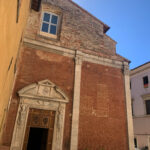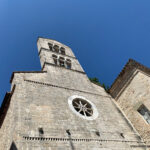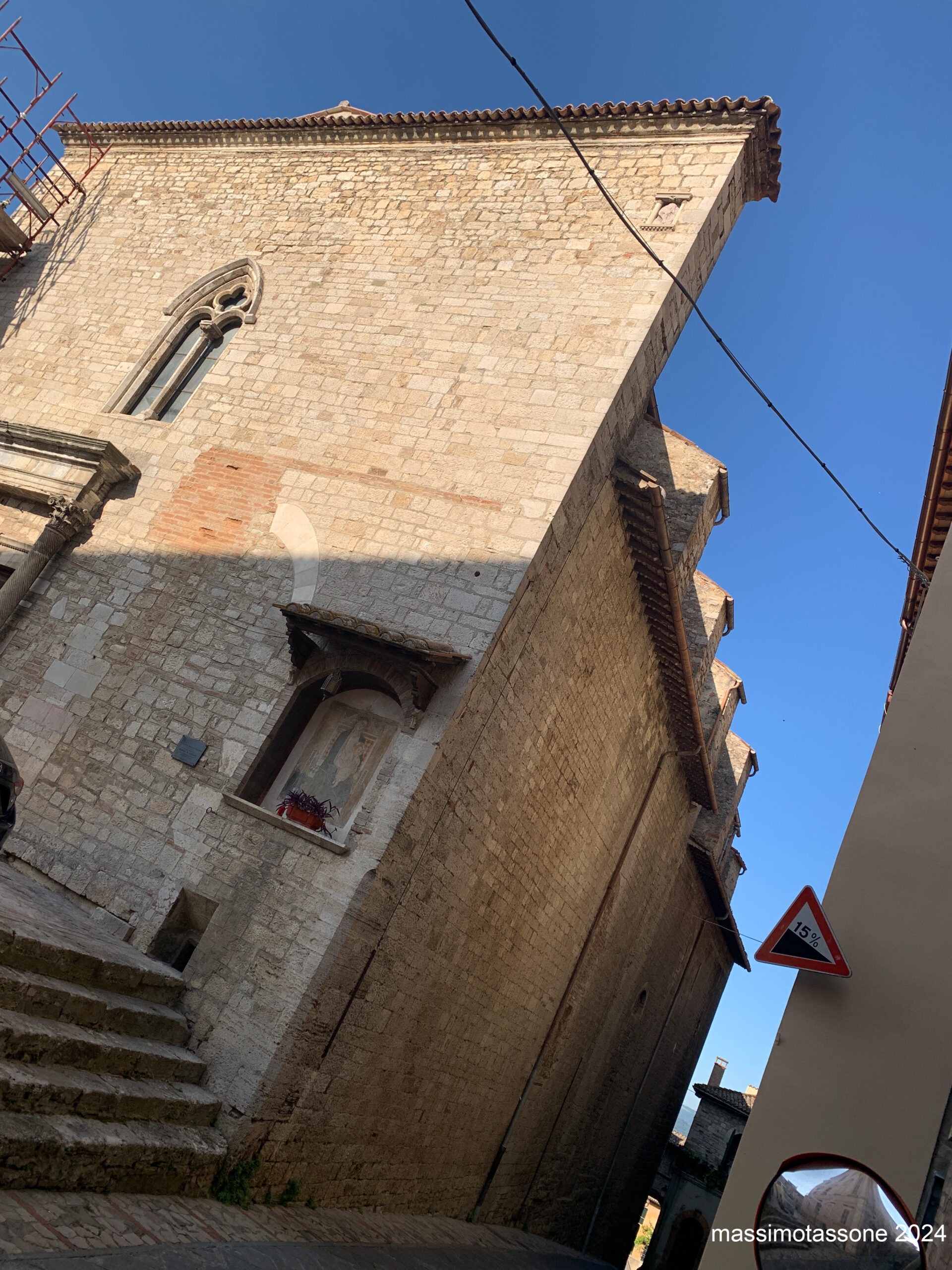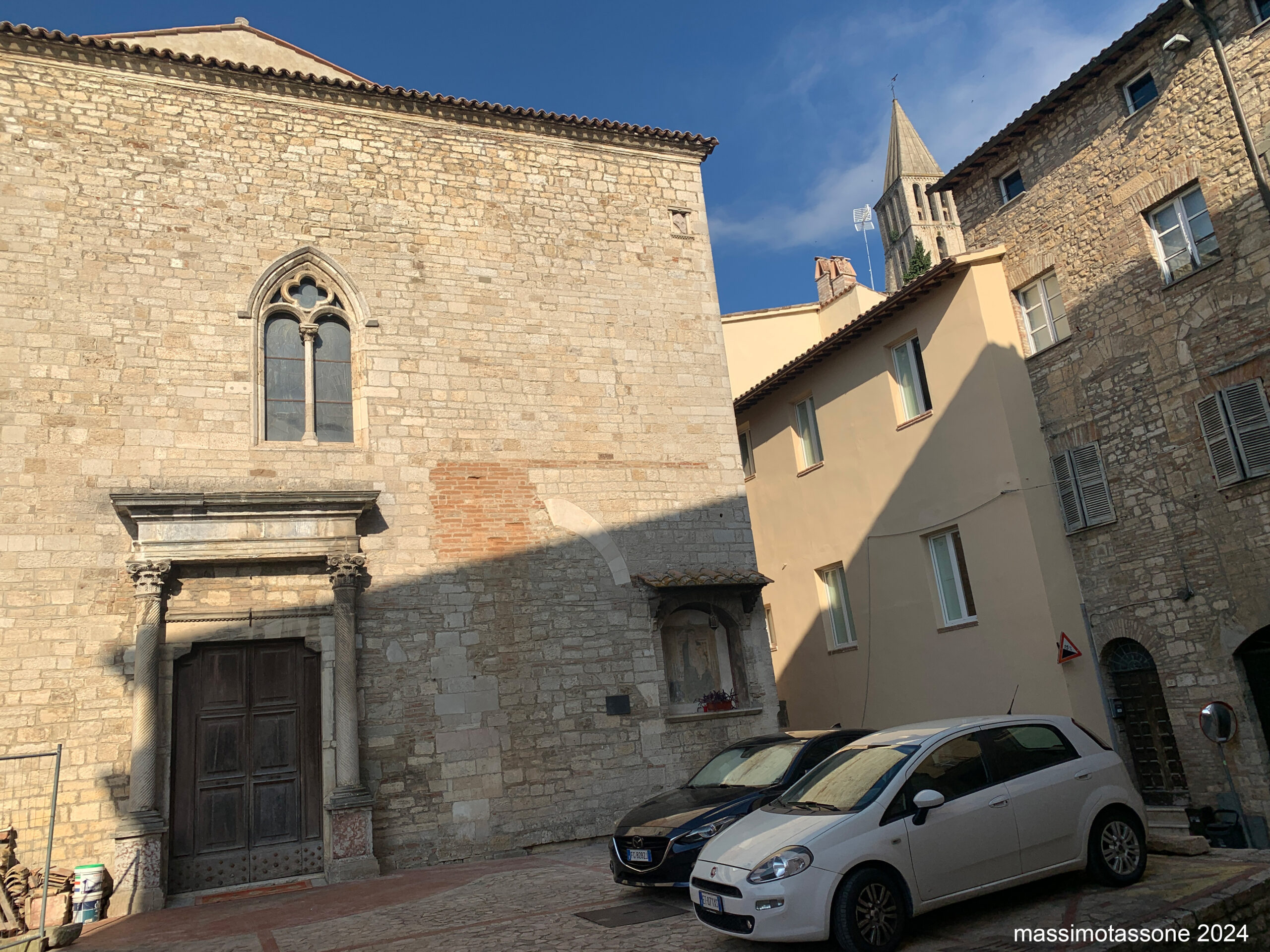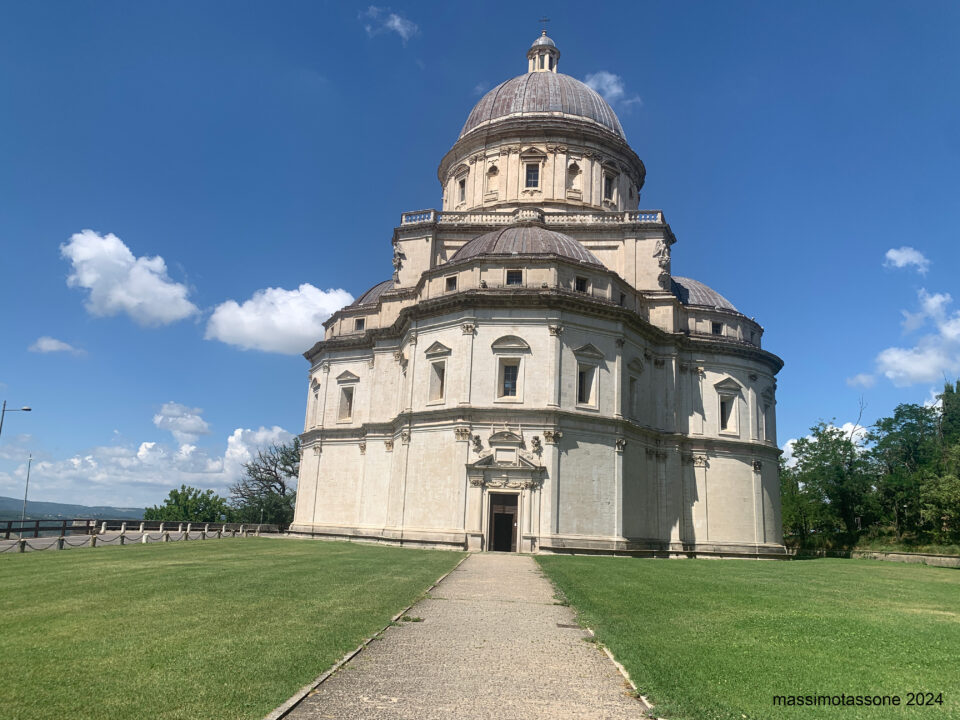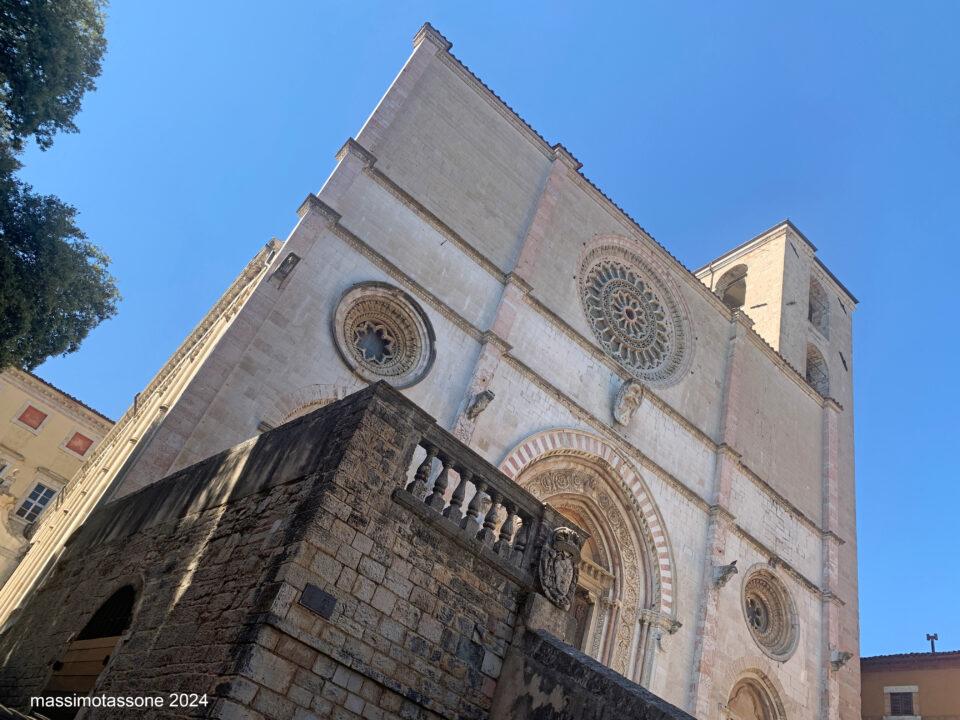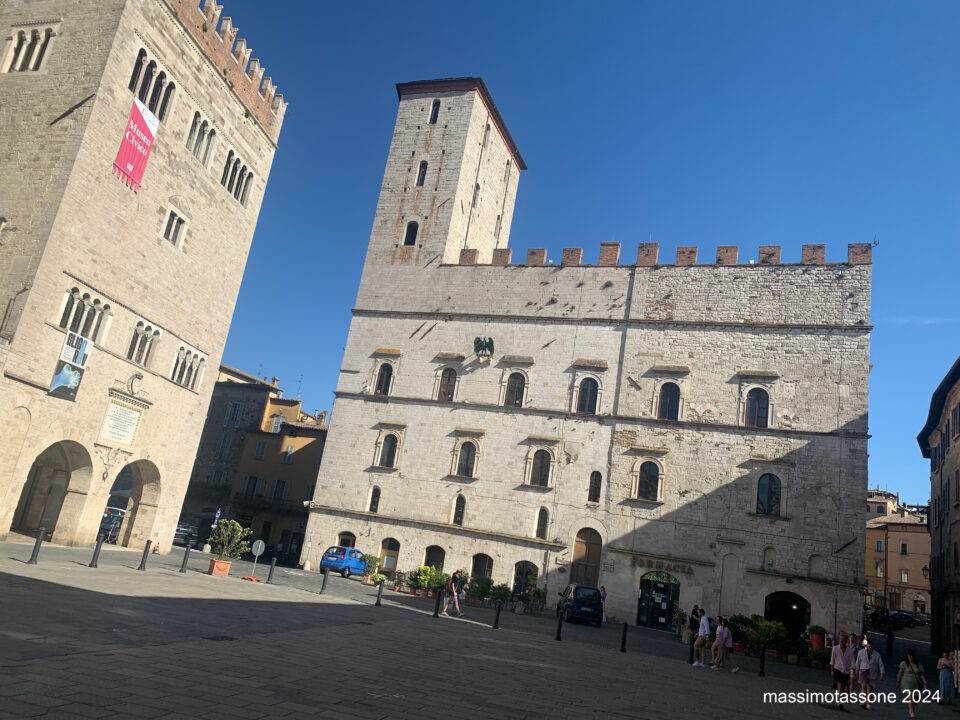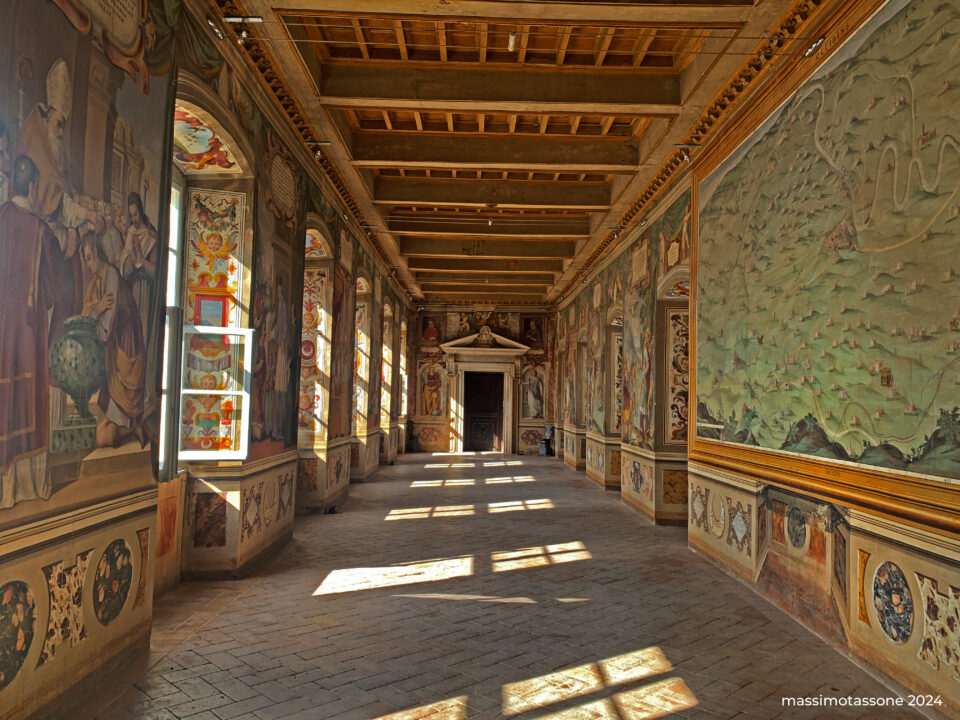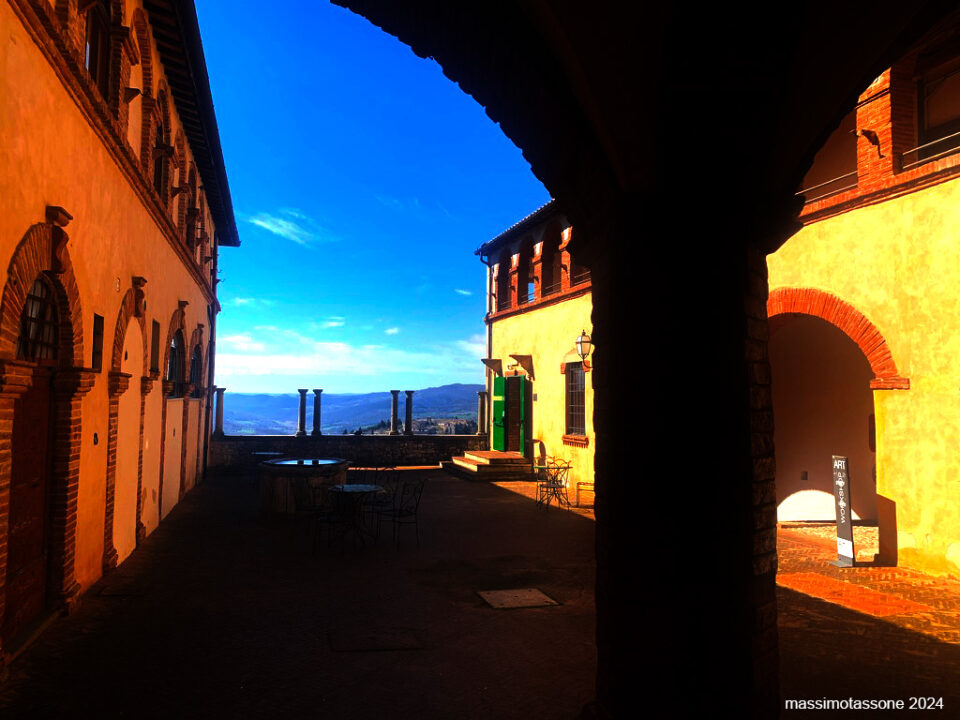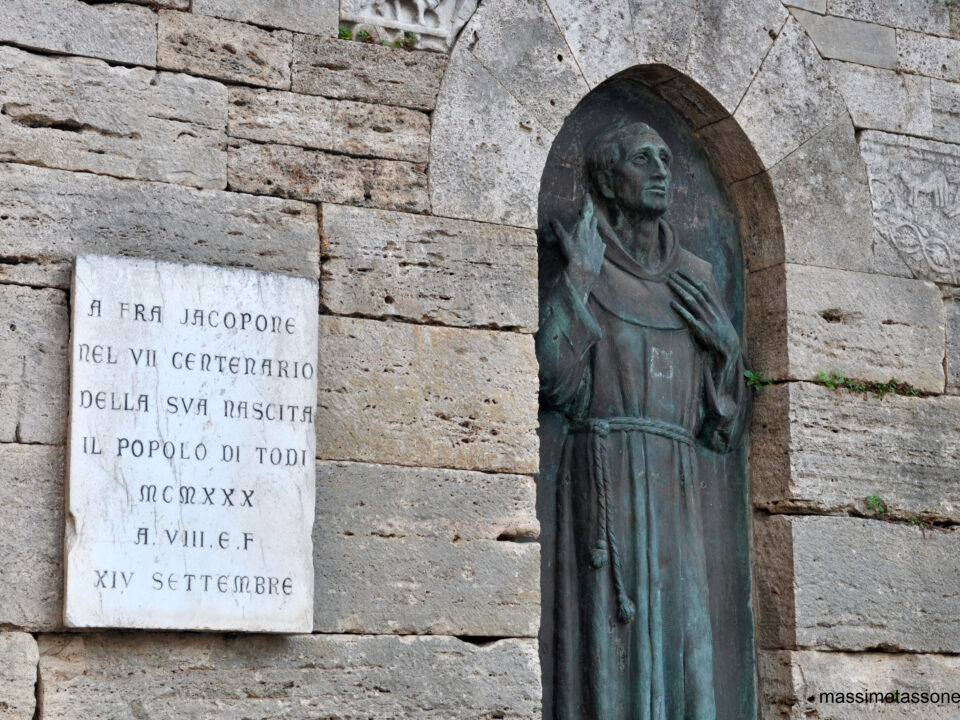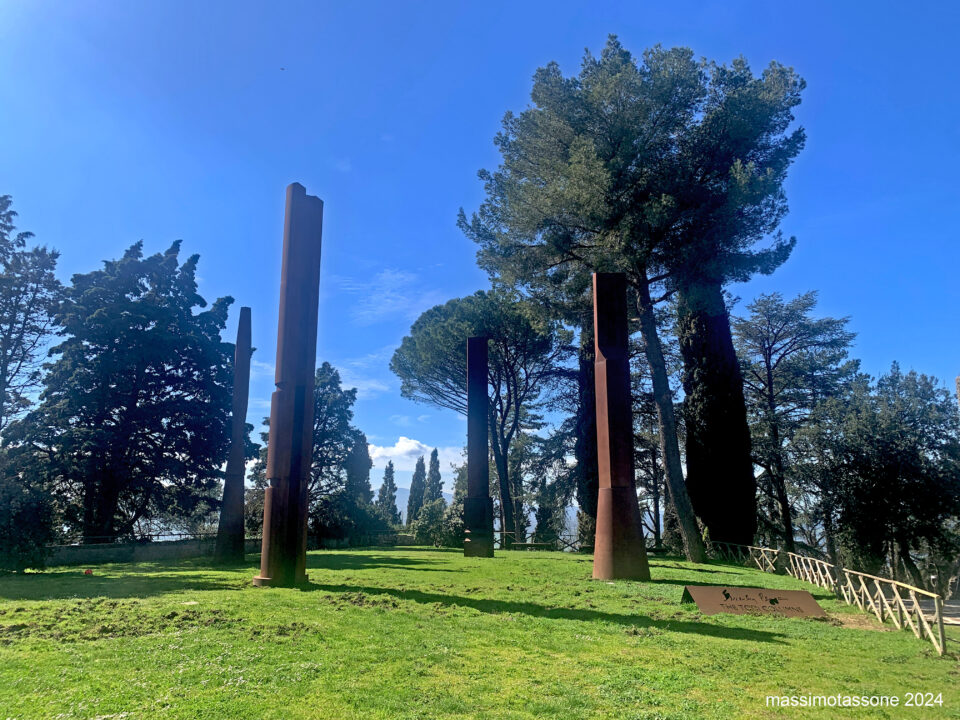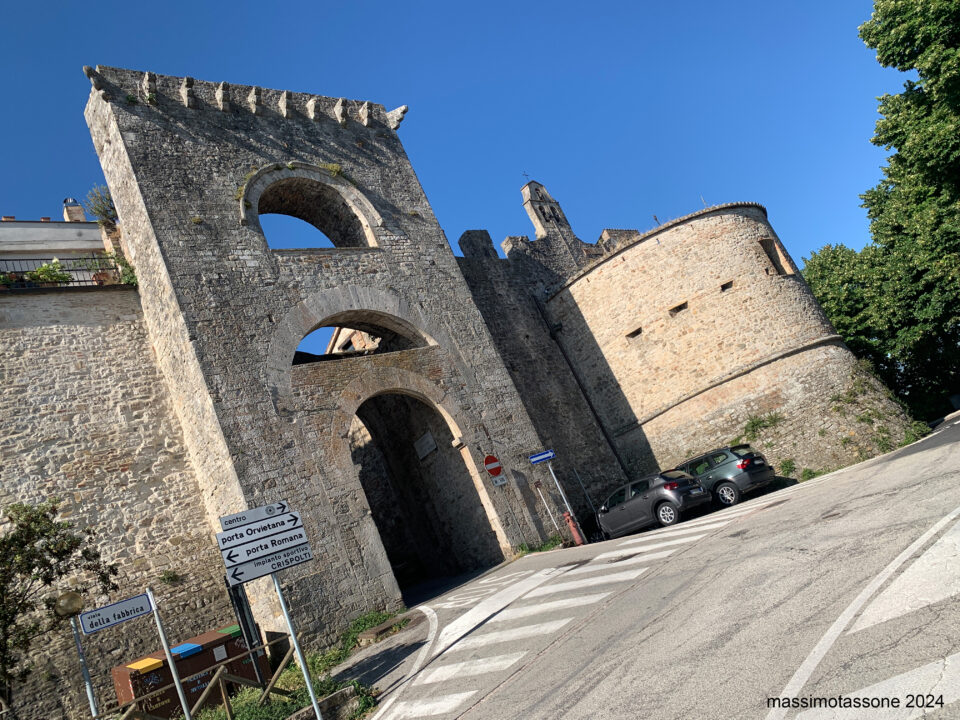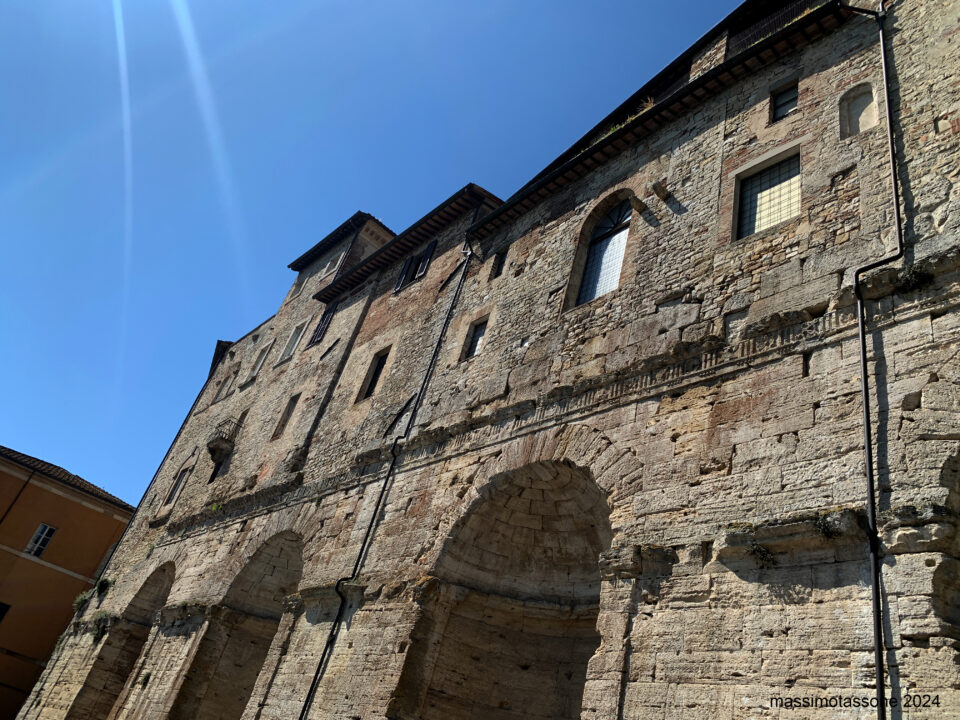The name of the district and the church has a controversial origin. It is perhaps derived from the presence of many workshops in the area where kid leather was tanned, referred to as "camoccia" in Latin. The church was erected at the end of the 12th century and is one of the oldest in the city, located in a neighborhood of medieval buildings and protected by Roman walls. In 1394, Pope Boniface IX granted it to the Dominican order, who built a convent there.
The façade of the church is square, while the interior has a single nave with three chapels on each side. Of particular note is the portal, supported by two Roman columns adorned with Corinthian capitals. Numerous paintings and frescoes decorate the interior. Of special interest is the third chapel on the left, where an ancient and precious wooden statue (made of walnut) from the late 12th century is preserved. It depicts the Madonna on a throne with the Child in her lap, known as "Sedes Sapientiae", meaning "Seat of Wisdom," as the Madonna holds Christ, symbolizing wisdom. This statue is now displayed in the cathedral.


